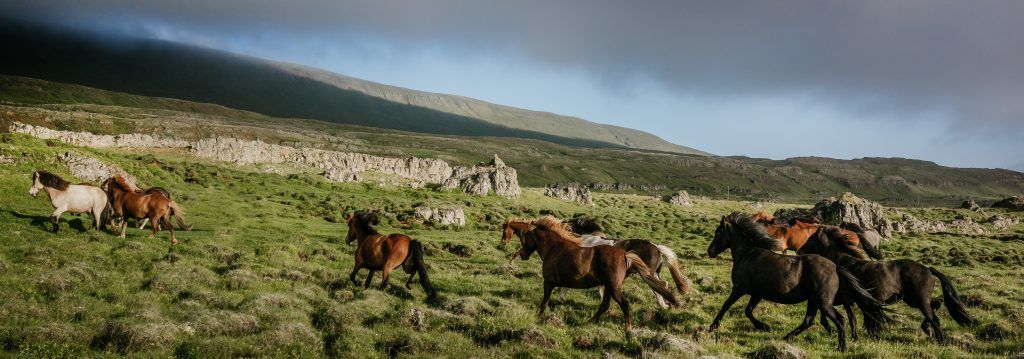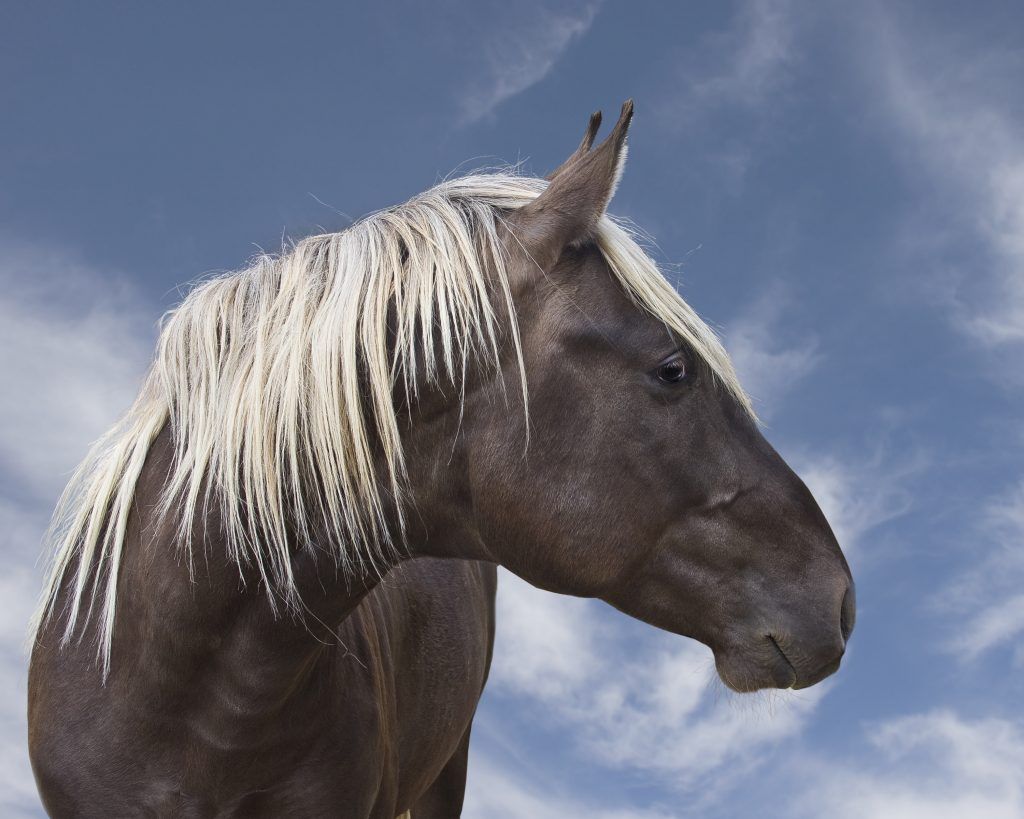Description of the horses of the rocky mountains
The horse has become a human helper since ancient times. The animal was used as a pulling force or as a means of transportation. Since then, many breeds have been selected to improve certain qualities. The horse of the rocky mountains is ranked among the species that scientists managed to bring out not so long ago.

Characteristics of Rocky Mountain Horses
This breed became known to man in the middle of the 20th century, and only by 1986 received a herd book. The Rocky Mountain Horse has unique gait abilities and a docile nature. The exterior of the animal is very unusual due to the impurities of other breeds.
Origin and range of the breed
The ancestor of the rocky mountain breed is a horse that came to Kentucky from the Apallach highlands. The descendants of this horse were distinguished by increased endurance, shortness and unusual color. In addition, these stallions are unpretentious in keeping.
The Studbook of the Rocky Mountain horse appeared only in 1986, after which professional breeders began to breed this breed. The number of horses today totals 3000 individuals.

History of the origin of the rocky mountain horse
This type of horse is quite rare among horse breeders due to the small number of stallions in nature. Basically, the horses of the rocky mountains are bred in America, while in Europe this species is practically nonexistent.
Horses are used on farms and for grazing cows. Due to their physiology, the horses of the rocky mountains are able to reach speeds of up to 20 km / h and maintain it for a long time.
Genetic features
There are several types of markers in Rocky Mountain horses, which depend on the influence of a particular breed during selection:
- The D-deké gene is characteristic of Spanish horses that live in the South of America. Many American horses have a similar gene in their bodies.
- The GPI-F gene was passed on to the Rocky breed from North American riding horses. This gene is responsible for the quality of the gait in animals. Some representatives of Spanish horses and heavyweights also have a similar breed feature.
- Gene Tf (Fr3) É horses acquired from a Spanish breed.
Also, representatives of this species have a deviation from the norm in the structure of the organs of vision. This is influenced by the presence of the ASD gene in the body. In order for a foal to be born healthy, it is necessary to exclude among the parents of horses with a silver suit.
The Rocky Mountain Horse became the ancestor of such equid-hoofed species as the Mountain Plege and the Kuntukk Horse. Over time, these breeds acquired their own standards for the exterior and even received studbooks. The differences between the representatives of these species of horses are insignificant.
According to the breeding norms, which are indicated in the studbook, a pair of horses for mating must be in the studbook. Otherwise, foals from one unknown parent are not recorded in the breed book. However, other offshoots do not have such strict breeding conditions.Kentucky horses are included in the studbook, even if there are non-purebred parents.
This is due to the small number of horses. Horses are crossed with other breeds to avoid inbreeding and genetic diseases.
Rocky Mountain Horse Exterior
This breed has standards that must be strictly followed. Despite the small number of horses, breeders try to breed only horses that meet the established criteria. Culling horses are not allowed for breeding.

Rocky mountain horse appearance
The rocky mountain rock exterior looks like this:
- The height of the animal ranges from 1.40 to 1.60 m. This criterion must be strictly observed, since larger breeds are considered a marriage.
- The body constitution of a horse must be compact. The ribcage is wide and the shoulder blades are at a 45 ° angle. The neck of the stallions is proportional to the body, the back is straight and ends with a strong croup.
- The legs of the animal have weak knee joints. The hooves are small, with a firmly horny plate.
- The animal's muzzle is relief, small in size. The eyes are expressive, the nostrils are well developed. The horse's ears are set high at right angles.
- The mane and tail of the animal are even, the stallions have bangs.
A characteristic suit for the representatives of this breed is bay, dun or black. At the same time, the mane and tail often have light colors. The first horse of the Rocky Mountains had a chocolate color with a snow-white mane and tail. Now such a combination is considered a rarity.
Also, the structure of the body of animals allows them to move with an unusual type of gait, which is called a four-stroke.
Rocky Mountain Horse Character
Representatives of this breed are characterized by such qualities as:
- meekness;
- calmness;
- credulity;
- endurance.
Most often, the horses of the rocky mountains are used for horse riding training. The stallion listens well to commands and is not subject to outbursts of aggression. A meek disposition is considered a vivid sign of the breed, recalcitrant horses are not allowed to mate.
Features of the gait
The Rocky Mountain Horse is prized primarily as a means of locomotion.
This is facilitated by the peculiarity of the body constitution, which will allow the animal to amble. This type of gait is also called slow gait. Unlike running in ordinary breeds, in which the horse rearranges its legs alternately, during the four-stroke gait, the stallion simultaneously rearranges the left and right limbs.
For the development of the amble, the horse does not need long training. The four-stroke gait is at the genetic level of the breed. This type of riding can be developed through lengthy training in breeds such as the American Horse or Tennessee, but to Rocky Mountain horses this skill is given at birth and does not require adjustment.

The Rocky Mountain Horse is prized as a vehicle
When ambled, a rocky mountain horse can reach speeds of 7 to 20 miles per hour. Due to the endurance of the horses, they were often used for long journeys in the past. Some farmers can now graze large herds of cows with the help of the rocky mountain breed.
Conditions of detention and diet
Stallions of this species do not require special care.
The horses of the rocky mountains are very unpretentious and can easily live in a stall of 4 square meters. m. However, it is important to monitor the cleanliness of the stable and the temperature level. The litter should be changed several times a week and the stall should be washed daily. In this case, the horse will remain healthy and strong.
The diet of stallions is also not very diverse. At knocks, the animal should eat the following types of food:
- hay or fresh grass;
- juicy feed;
- vitamins and mineral supplements.
However, the horse's drinker should always be full and the water clear. Stallions of this breed drink a lot, and dehydration can lead to the death of the animal.
So, a horse from rocky mountains is distinguished by high endurance and docile character.A characteristic feature of the animal is a four-stroke gait and an unusual color. The breed was bred in the middle of the last century and has about 3000 horses. Scientists are continuing to work on this species to improve the riding performance of stallions.


